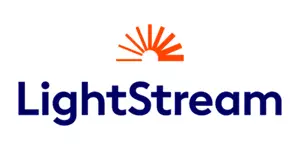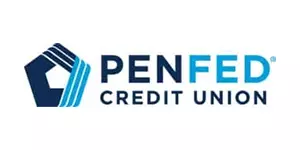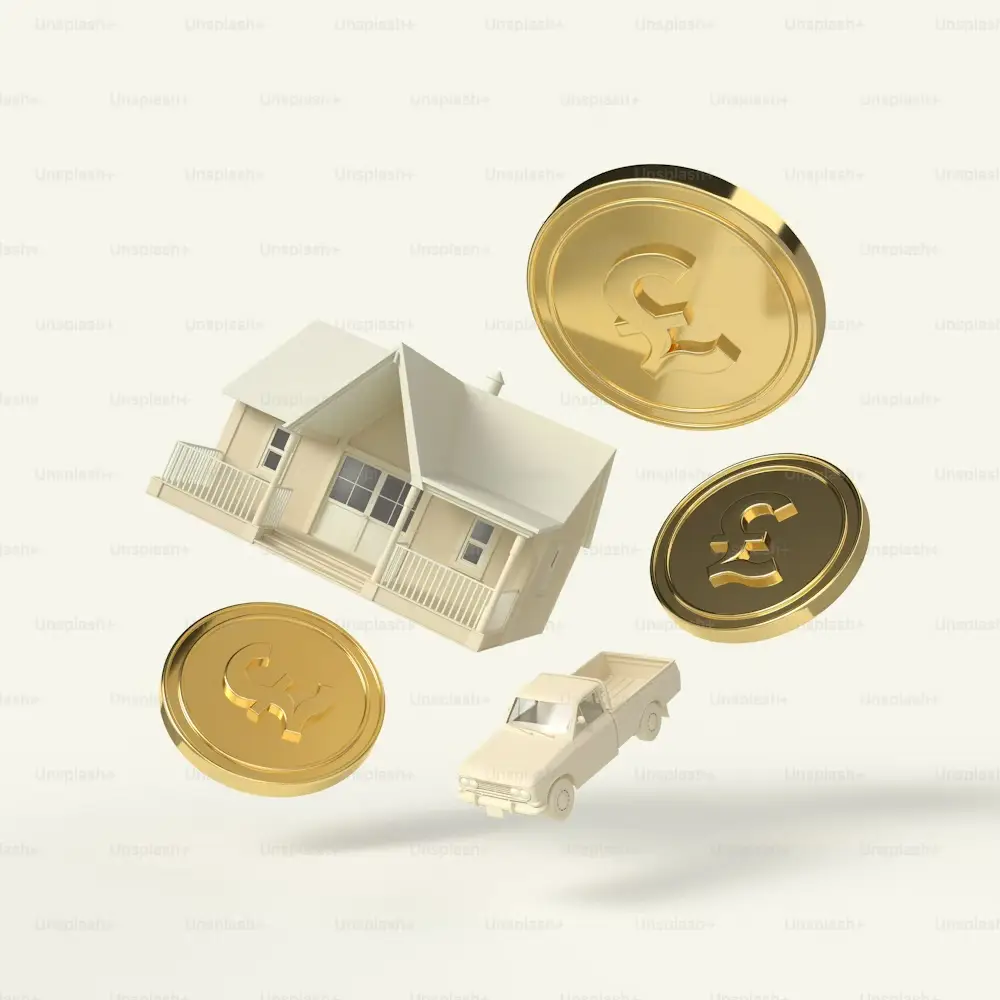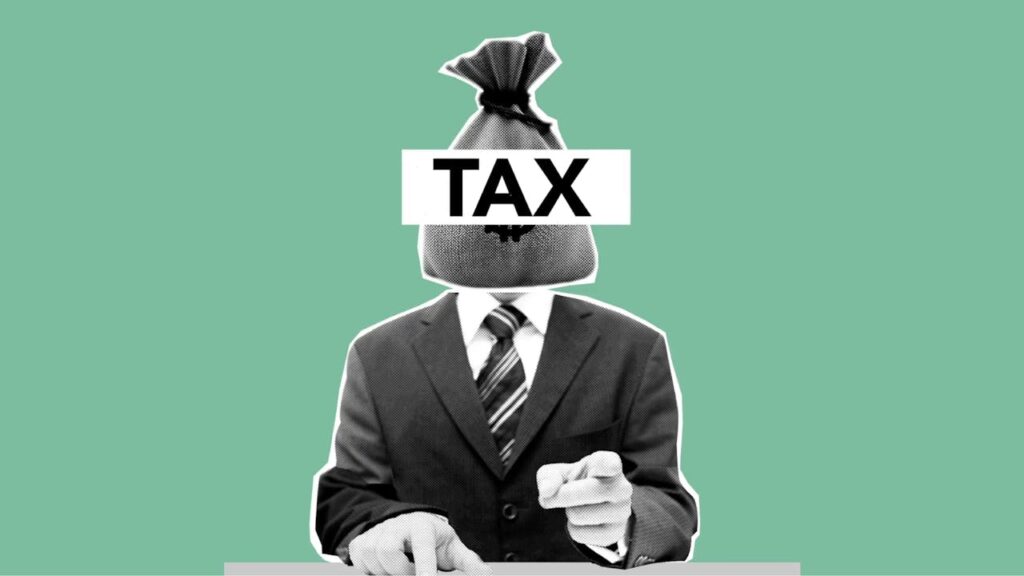Exploring different types of $400 loans
When it comes to obtaining a $400 loan, there are several options available, each with its own unique features and requirements. Understanding these different types can help you make an informed decision based on your specific needs and circumstances.
- Payday Loans: Payday loans are short-term, unsecured loans that are typically due on your next payday. These loans can be obtained quickly, often with minimal credit checks, but they usually come with high interest rates and fees.
- Installment Loans: Installment loans allow you to borrow a fixed amount of money and repay it over a predetermined period, typically in equal monthly installments. These loans can be secured or unsecured and may have more favorable terms than payday loans.
- Personal Loans: Personal loans are versatile and can be used for a variety of purposes, including covering unexpected expenses or consolidating debt. These loans can be obtained from banks, credit unions, or online lenders and may require a credit check.
- Credit Card Cash Advances: If you have a credit card with available credit, you may be able to obtain a cash advance up to your credit limit. However, cash advances often come with higher interest rates and fees compared to regular credit card purchases.
- Peer-to-Peer (P2P) Lending: P2P lending platforms connect borrowers with individual investors who are willing to fund their loans. These platforms may offer competitive interest rates and flexible repayment terms, but the approval process can be more rigorous.
It’s important to carefully evaluate the terms and conditions of each loan type, including interest rates, fees, repayment schedules, and any potential penalties or charges. By understanding the nuances of these options, you can make an informed decision that aligns with your financial situation and repayment capabilities.
How to qualify for a $400 loan with a 400 credit score
Having a less-than-perfect credit score can make it challenging to secure traditional loans, but it doesn’t necessarily mean you can’t qualify for a $400 loan. Many lenders understand that credit scores don’t tell the whole story and are willing to consider alternative factors when evaluating loan applications.
If you have a credit score around 400, here are some tips to increase your chances of qualifying for a $400 loan:
- Provide Proof of Income: Lenders want to ensure that you have the ability to repay the loan. Providing documentation of your steady income, such as pay stubs or bank statements, can help demonstrate your financial stability.
- Consider Secured Loans: Some lenders may offer secured loans, where you provide collateral (e.g., a vehicle or valuable asset) to secure the loan. This can increase your chances of approval and potentially lead to better terms.
- Explore Online Lenders: Online lenders often have more flexible credit requirements and may be more willing to consider applicants with lower credit scores. However, be cautious and thoroughly research the lender’s reputation and terms.
- Offer a Co-signer: If you have a friend or family member with a strong credit history, they may be willing to co-sign the loan with you. This can improve your chances of approval and potentially result in better interest rates.
- Provide Explanations: If there are extenuating circumstances that led to your low credit score, such as a job loss or medical emergency, provide a written explanation to the lender. This can help them understand your situation better and potentially overlook the low credit score.
- Consider Alternative Lenders: While not ideal, some alternative lenders, such as payday or title loan providers, may be willing to approve a $400 loan with a low credit score. However, these loans often come with exorbitant interest rates and fees, so they should be considered as a last resort.
Remember, while a low credit score can make the process more challenging, it’s not impossible to qualify for a $400 loan. By being proactive, providing documentation, and exploring alternative options, you can increase your chances of securing the funds you need.
Finding a direct lender for a $400 loan with bad credit
When you have bad credit, finding a lender willing to provide a $400 loan can be a daunting task. Traditional banks and credit unions may be hesitant to approve your loan application due to your credit history. However, there are direct lenders who specialize in offering loans to individuals with less-than-perfect credit scores.
Direct lenders are financial institutions or online platforms that work directly with borrowers, without involving intermediaries or third-party brokers. By working with a direct lender, you can streamline the application process and potentially secure better terms and interest rates.
Here are some tips to help you find a direct lender for a $400 loan with bad credit:
- Online Lender Marketplaces: There are several online marketplaces that connect borrowers with various direct lenders. These platforms allow you to submit a single application and receive multiple loan offers from different lenders. This can help you compare terms and find the best deal for your situation.
- Peer-to-Peer (P2P) Lending Platforms: P2P lending platforms, such as LendingClub or Prosper, connect borrowers with individual investors willing to fund their loans. These platforms often have more flexible credit requirements and may be more willing to consider applicants with bad credit.
- Local Credit Unions: While some credit unions may have strict credit requirements, others may be more lenient, especially if you’re an existing member. It’s worth exploring loan options with local credit unions in your area.
- Online Lenders Specializing in Bad Credit: There are online lenders that specifically cater to borrowers with bad credit. These lenders often have more relaxed credit requirements and may be willing to approve your $400 loan application, although the interest rates and fees may be higher.
- Secured Loan Options: If you have collateral, such as a vehicle or valuable asset, you may be able to secure a $400 loan by offering it as security. Secured loans often have more favorable terms and interest rates, even for borrowers with bad credit.
When exploring direct lenders for a $400 loan with bad credit, it’s essential to thoroughly research each lender’s reputation, terms, and conditions. Read reviews, compare interest rates and fees, and ensure that the lender is reputable and transparent about their lending practices.
Remember, while bad credit can make the process more challenging, there are still options available. By being diligent and exploring various direct lenders, you can increase your chances of securing the $400 loan you need.
Calculating mortgage insurance on a $400,000 loan
When obtaining a mortgage loan, borrowers are often required to pay mortgage insurance if their down payment is less than 20% of the home’s value. Mortgage insurance protects the lender in case the borrower defaults on the loan. If you’re considering a $400,000 loan, understanding the cost of mortgage insurance is crucial to accurately assess the total cost of your home purchase.
The amount of mortgage insurance you’ll need to pay depends on several factors, including the loan amount, the down payment percentage, and the type of mortgage insurance you choose. Here’s a breakdown of how to calculate mortgage insurance on a $400,000 loan:
- Conventional Mortgage Insurance (PMI): If you’re obtaining a conventional mortgage loan with a down payment of less than 20%, you’ll likely need to pay Private Mortgage Insurance (PMI). The PMI rate is typically expressed as a percentage of the loan amount and varies based on your credit score and down payment percentage. For example, if your credit score is 720 and you’re putting down 5% ($20,000) on a $400,000 loan, your PMI rate might be around 0.85%. To calculate the annual PMI cost, multiply the loan amount by the PMI rate: $400,000 x 0.85% = $3,400 (annual PMI cost)
- FHA Mortgage Insurance: If you’re obtaining a mortgage insured by the Federal Housing Administration (FHA), you’ll need to pay both an upfront mortgage insurance premium (UFMIP) and an annual mortgage insurance premium (MIP).
- The UFMIP is typically 1.75% of the loan amount, which would be $7,000 for a $400,000 loan.
- The annual MIP rate varies based on your loan-to-value ratio (LTV) and the term of the loan. For a $400,000 loan with a 5% down payment and a 30-year term, the annual MIP rate might be around 0.85%.
- USDA Mortgage Insurance: If you’re obtaining a mortgage through the United States Department of Agriculture (USDA) Rural Development program, you’ll need to pay an upfront guarantee fee and an annual fee.
- The upfront guarantee fee is typically 1% of the loan amount, which would be $4,000 for a $400,000 loan.
- The annual fee is typically 0.35% of the remaining loan balance.
It’s important to note that mortgage insurance premiums can vary based on your specific circumstances, such as credit score, loan program, and down payment amount. Additionally, mortgage insurance may be tax-deductible, which can help offset some of the costs.
When calculating the total cost of your mortgage, be sure to factor in the mortgage insurance premiums, as they can significantly impact your monthly payments and overall expenses.
The process of obtaining a $400 payday loan
Payday loans are a type of short-term, unsecured loan designed to provide quick cash until your next payday. If you find yourself in need of a $400 loan and are considering a payday loan, it’s essential to understand the process and what to expect.
Here’s a step-by-step guide to obtaining a $400 payday loan:
- Research Lenders: Start by researching payday lenders in your area or online. Look for reputable lenders with transparent terms and fees. Read reviews and compare interest rates and fees to find the best option.
- Gather Required Documents: Payday lenders typically require proof of income, such as pay stubs or bank statements, and a valid form of identification, like a driver’s license or state-issued ID.
- Complete the Application: You can typically apply for a payday loan online or in person at a lender’s storefront. The application process is usually straightforward and involves providing personal and financial information.
- Provide Employment and Income Verification: The lender will likely require you to provide proof of employment and income to ensure you have the ability to repay the loan.
- Submit to a Credit Check (Optional): While payday lenders generally don’t require a credit check, some may perform a soft credit pull to assess your creditworthiness.
- Review and Sign the Loan Agreement: If approved, carefully review the loan agreement, which will outline the loan amount, interest rate, fees, and repayment terms. Make sure you understand all the terms before signing.
- Receive the Loan Funds: Once the loan agreement is signed, you’ll receive the $400 loan funds, typically via a direct deposit into your bank account or in cash at the lender’s storefront.
- Repay the Loan: Payday loans are typically due on your next payday, usually within two to four weeks. The lender will either automatically withdraw the loan amount plus interest and fees from your bank account or require you to make a payment in person.
It’s crucial to understand that payday loans often come with exorbitantly high interest rates and fees, which can make them challenging to repay. Additionally, failing to repay the loan on time can result in additional fees and potential legal consequences.
If you’re considering a payday loan, it’s essential to carefully evaluate your ability to repay the loan on time and explore alternative options that may be more affordable in the long run.
Exploring options for a $400 installment loan with bad credit
If you have bad credit and need a $400 loan, an installment loan can be a viable option. Unlike payday loans, which require repayment in a single lump sum, installment loans allow you to repay the borrowed amount in smaller, more manageable installments over a predetermined period.
Here are some options to explore for a $400 installment loan with bad credit:
- Online Lenders: Many online lenders specialize in offering installment loans to borrowers with bad credit. These lenders often have more flexible credit requirements and may be willing to approve your loan application based on factors beyond your credit score, such as income and employment history.
- Peer-to-Peer (P2P) Lending Platforms: P2P lending platforms connect borrowers with individual investors willing to fund their loans. These platforms may have more lenient credit requirements and offer installment loan options for borrowers with bad credit.
- Credit Unions: While credit unions typically have stricter lending criteria, some may be more willing to work with borrowers who have bad credit, especially if you’re an existing member. It’s worth exploring installment loan options with local credit unions in your area.
- Secured Installment Loans: If you have collateral, such as a vehicle or valuable asset, you may be able to secure an installment loan by offering it as security. Secured loans often have more favorable terms and interest rates, even for borrowers with bad credit.
- Subprime Lenders: Subprime lenders specialize in providing loans to borrowers with poor credit histories. While these lenders may be more willing to approve your $400 installment loan, they often charge higher interest rates and fees.
When exploring installment loan options with bad credit, it’s essential to carefully review the terms and conditions, including the interest rate, fees, repayment schedule, and any potential penalties or charges. Additionally, make sure to choose a reputable lender and read reviews to ensure a transparent and ethical lending process.
Remember, while bad credit can make it more challenging to secure a loan, there are still options available. By exploring various lenders and being diligent in your research, you can increase your chances of finding a $400 installment loan that fits your financial situation and repayment capabilities.
Where to get a $400 loan with no credit check
In situations where you need quick access to cash but have a less-than-perfect credit history, finding a lender that offers a $400 loan without a credit check can seem appealing. However, it’s important to approach these types of loans with caution, as they often come with higher interest rates and fees. Here are some options to consider when seeking a $400 loan with no credit check:
- Payday Lenders: Many payday lenders offer small-dollar loans without requiring a credit check. Instead, they may rely on factors such as your income and employment status to determine your eligibility. While convenient, payday loans typically have extremely high-interest rates and short repayment periods, making them a costly option.
- Auto Title Loans: If you own a vehicle outright, you may be able to obtain a loan by using your car’s title as collateral. These lenders generally don’t perform credit checks but charge exorbitant interest rates and fees. Additionally, failure to repay the loan can result in the loss of your vehicle.
- Pawn Shop Loans: Pawn shops offer loans based on the value of the items you pledge as collateral, such as jewelry, electronics, or other valuable possessions. While no credit check is required, the loan amounts are typically small, and you risk losing your collateral if you fail to repay the loan.
- Peer-to-Peer (P2P) Lending Platforms: Some P2P lending platforms may offer personal loans without performing a hard credit check. Instead, they may use alternative data points, such as your income and employment history, to assess your creditworthiness.
- Online Lenders: Certain online lenders specialize in offering no-credit-check loans, often at higher interest rates and fees. These lenders may rely on alternative data sources or require collateral to mitigate their risk.
It’s important to note that while these options may provide a quick solution, they can be extremely costly and potentially trap you in a cycle of debt. Before pursuing a no-credit-check loan, it’s advisable to explore alternative options, such as borrowing from friends or family, negotiating with creditors, or seeking assistance from local non-profit organizations.
If you do decide to pursue a no-credit-check loan, be sure to carefully review the terms and conditions, including interest rates, fees, and repayment schedules. Additionally, ensure that you have a solid plan in place to repay the loan on time to avoid additional fees or penalties.
Meeting urgent financial needs with a $400 loan
Life can be unpredictable, and unexpected expenses can arise at any moment, leaving you in a financial bind. Whether it’s a sudden car repair, a medical emergency, or an overdue utility bill, sometimes a small loan can make all the difference in helping you navigate through these challenging situations. A $400 loan can provide the temporary relief you need to meet your urgent financial needs and avoid potential late fees, penalties, or disruptions to essential services.
When facing an urgent financial need, a $400 loan can offer several advantages:
- Quick Access to Funds: One of the primary benefits of a $400 loan is the speed at which you can access the funds. Many lenders offer rapid approval processes, allowing you to receive the money within a day or two, sometimes even the same day. This quick turnaround can be invaluable when dealing with time-sensitive expenses.
- Minimal Requirements: Compared to larger loans, the requirements for a $400 loan are often more lenient. Lenders may require minimal documentation, such as proof of income and identification, making the application process more straightforward and efficient.
- Flexibility in Use: A $400 loan can be used for a wide range of purposes, from paying overdue bills to covering emergency medical expenses or unexpected car repairs. This flexibility allows you to address your specific financial needs without restrictions.
- Manageable Repayment: While interest rates and fees may be higher for small-dollar loans, the overall repayment amount for a $400 loan is generally manageable, especially if you have a solid repayment plan in place.
- Avoiding Late Fees and Penalties: By securing a $400 loan, you can avoid late fees, penalties, or disruptions to essential services that could potentially compound your financial difficulties.
When facing an urgent financial need, it’s crucial to explore your options and carefully evaluate the terms and conditions of any loan you consider. While a $400 loan can provide temporary relief, it’s important to have a plan in place to repay the loan on time and avoid falling into a cycle of debt.
Additionally, it’s advisable to explore alternative solutions, such as negotiating with creditors, seeking assistance from local non-profit organizations, or reaching out to friends and family for support. By taking a proactive approach and exploring all available options, you can increase your chances of overcoming your financial challenges and regaining control of your finances.
Understanding the repayment terms for a $400 loan
When taking out a $400 loan, it’s essential to understand the repayment terms and conditions clearly. Failure to repay the loan on time can result in additional fees, penalties, and potentially damage your credit score. Here’s what you need to know about the repayment terms for a $400 loan:
- Loan Term: The loan term refers to the length of time you have to repay the loan. For a $400 loan, the term can vary from a few weeks to several months, depending on the lender and the type of loan. Payday loans, for instance, typically have a shorter term of two to four weeks, while installment loans may offer longer repayment periods.
- Repayment Schedule: The repayment schedule outlines when and how you’ll make payments toward the loan. For payday loans, the entire loan amount, plus interest and fees, is typically due on your next payday. Installment loans, on the other hand, allow you to make smaller, more manageable payments over a set period, such as bi-weekly or monthly.
- Interest Rates and Fees: It’s crucial to understand the interest rates and fees associated with your $400 loan. These can vary significantly depending on the lender and the type of loan. Payday loans, for example, often have exorbitantly high annual percentage rates (APRs), which can make them challenging to repay. Installment loans may have lower APRs but may include additional fees, such as origination or late payment fees.
- Prepayment Penalties: Some lenders may charge a prepayment penalty if you pay off the loan before the end of the term. It’s essential to review the loan agreement and understand if there are any prepayment penalties, as this can impact your decision to pay off the loan early.
- Automatic Withdrawals: Many lenders require borrowers to provide bank account information for automatic withdrawals on the due date. It’s crucial to ensure that you have sufficient funds in your account to avoid overdraft fees or missed payments.
- Late Payment Consequences: Failing to make a payment on time can result in late fees, additional interest charges, and potentially negative impacts on your credit score. Some lenders may also report late payments to credit bureaus, making it more difficult to obtain future loans or credit.
Before signing any loan agreement, carefully review the repayment terms and ensure that you understand all the associated costs and potential consequences. It’s also advisable to create a realistic budget and repayment plan to ensure that you can meet your obligations on time.
Remember, while a $400 loan can provide temporary financial relief, it’s essential to approach it responsibly and prioritize timely repayment to avoid further financial difficulties.
Taking advantage of a $400 loan for quick and hassle-free cash
In today’s fast-paced world, unexpected expenses can arise at any moment, leaving you in need of quick and hassle-free cash. Whether it’s an emergency car repair, a medical bill, or an overdue utility payment, a $400 loan can provide the financial relief you need to navigate through these challenging situations.
One of the primary advantages of a $400 loan is the speed and convenience it offers. Unlike larger loans that often require extensive documentation and a lengthy approval process, many lenders specializing in small-dollar loans can provide you with the funds you need within a day or two, sometimes even the same day.
Another benefit of a $400 loan is the minimal requirements and paperwork involved. Lenders understand that time is of the essence when facing financial emergencies, and they strive to streamline the application process. In most cases, you’ll only need to provide proof of income, such as pay stubs or bank statements, and a valid form of identification.
Furthermore, a $400 loan can be a viable option even if you have less-than-perfect credit. While having a good credit score can increase your chances of approval and potentially lead to better terms, many lenders are willing to consider alternative factors, such as your employment history and income stability, when evaluating your loan application.
Once approved, you can use the $400 loan for a wide range of purposes, from paying overdue bills to covering unexpected medical expenses or even consolidating smaller debts. This flexibility allows you to address your specific financial needs without restrictions, providing you with the peace of mind and financial stability you require.
It’s important to note that while a $400 loan can offer quick and hassle-free cash, it’s essential to approach it responsibly. Be sure to carefully review the terms and conditions, including interest rates, fees, and repayment schedules, to ensure that you can comfortably repay the loan on time and avoid any additional charges or penalties.
Additionally, it’s advisable to explore alternative solutions, such as negotiating with creditors, seeking assistance from local non-profit organizations, or reaching out to friends and family for support. By taking a proactive approach and exploring all available options, you can increase your chances of overcoming your financial challenges and regaining control of your finances. If you’re facing an unexpected financial emergency and need quick and hassle-free cash, consider exploring your options for a $400 loan. At [Lender Name], we understand the importance of financial flexibility and strive to provide our customers with fast and reliable loan solutions. Visit our website at [Website URL] or call us at [Phone Number] to learn more about our $400 loan options and how we can assist you in meeting your urgent financial needs.























